An Iranian teacher asked me for some alphabet games. He needed help with teaching the alphabet because his pupils were confused. He said his preschool children could not see the difference between b and d, p and q, and other letters. This confusion is not reserved for Iranian students since all preschool children have to get to grips with these letters, even native speakers.
Combine techniques
To solve the confusion, pupils need lots of exposure to the letters in different ways. Alphabet games are an excellent way for pupils to learn. Games use a combination of approaches that appeal to different learning styles. Therefore, you’ll get to your goal faster than only using copy and trace worksheets. Instead of endless letter-tracing, you need pictures, sounds, crafts, association, games, movement, and lots of repetition. Here are some alphabet games for the letters b and d.
Hands-on
Draw the letter b on the board and put your hand in front, making the “thumbs up” sign in the shape of the letter. Please see the picture at the top of this post to see what that looks like. Next, draw several large letter bs and have students come up and make the thumbs up shape in front of the letter. Remember that a mirror image will be confusing. So, if you make the thumbs up with your left hand it will be a b to you, looking at the palm, and a d to the class, looking at the back of your hand. So be consistent throughout. Repeat this with the letter d, using thumbs up with the right hand.
This idea will work with some children and not with others. In addition, very young children do not know left and right. Therefore use a variety of approaches and lots of repetition.
Make the letters real
Through crafts, turn the letters into real shapes that children can create, feel and see. Decide if you are doing upper or lower case, and if you are doing lower case, then all crafts should be in that case.
Have each child cut out a big letter b and a big letter d from a packet of cornflakes or thin card. Colour or decorate the letters. Use association so your b letter could be black and yellow stripes for a bee. Have kids decorate the letter d in line with what it represents; for example, d for door, (brown), d for dog (brown wool), or d for duck (feathers). If you look online for crafts for letters, you will find ideas from simple to complex to fit in with your facilities.
Games
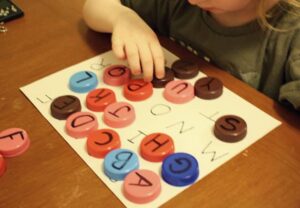
A nice hands-on alphabet game is to collect plastic bottle tops and write a letter on each one, in indelible ink. Then, write the letters on a page and pupils match the bottle tops to the letters. You can see that shown in this nice picture from de-tout-et-de-rien-caroline.blogspot.fr
Once you have these bottle tops, re-use them for sorting games, hide and seek games, run and fetch, aim and throw the letter in a pan, stacking a tower, passing games, musical games, and so on.
de-tout-et-de-rien-caroline.blogspot.fr is a cool site with nice ideas for making something from not much!
Writing
Show the child how to write the letter b – take the child’s hand and draw a large b with them, so they feel how you create the letter. DOWN the post and ROUND the ball. Give children a sheet with trace round the letters, a column of bs and a column of ds.
Fun resources with alphabet games
See my preschool games book for LOTS of fun ideas. In download from me, or in paperback from Amazon, or your local bookstore on order. All this play with the letters will lead to excellent recognition, and from there you can move to the writing phase.
-
 ESL Online Games€19.97Rated 5.00 out of 5 based on 4 customer ratings
ESL Online Games€19.97Rated 5.00 out of 5 based on 4 customer ratings -
Sale Product on sale
 ESL Games book for primary & middle school children
ESL Games book for primary & middle school children€19.97Original price was: €19.97.€15.33Current price is: €15.33.Rated 5.00 out of 5 based on 2 customer ratings -
Sale Product on sale
 Preschool games book
Preschool games book€19.97Original price was: €19.97.€11.97Current price is: €11.97.
All resources are in paperback from Amazon or download. Here is my Amazon author page: Shelley Ann Vernon
And here is my online shop for downloads.
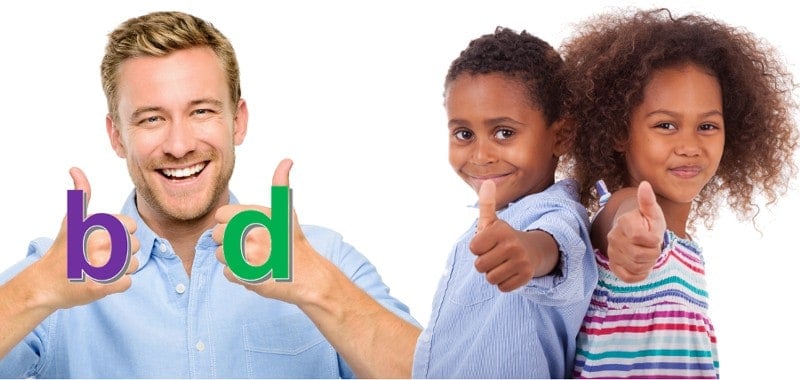
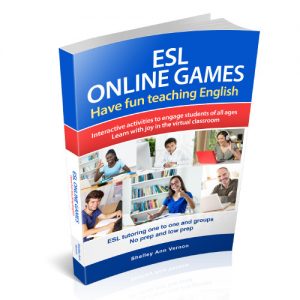
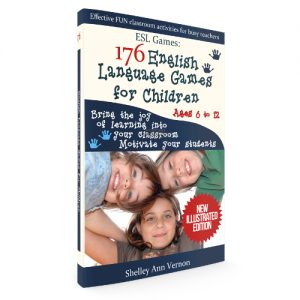
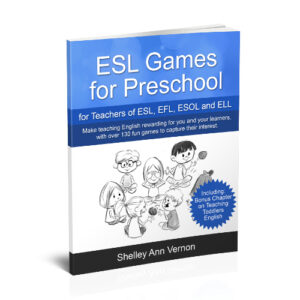
2 thoughts on “Alphabet games”
With ‘b’ and ‘d’ it may be helpful to teach them as two separate pairs of sounds. One pair, ‘b’ and ‘p’ and another pair, ‘d’ and ‘t’. These minimal pairs lend themselves to a range of fun games.
The first pair are ‘labial’ sounds, produced using the lips, ‘b’ being non-plosive and ‘p’ being plosive. The second pair are ‘dental’ sounds, produced using the tongue behind the upper row of teeth in a downward movement.
An example listening activity that works well, in my experience, is a ‘pronunciation journey’, of minimal pairs, where students ‘travel’ from one point to another.
I hope this is of some help!
Hello Laurence,
Thanks for your comment. I agree and was thinking of that when writing this post. I think it’s also useful to contrast and play with ‘p’ and ‘b’, since they are the same aside from the plosivity (made-up word no doubt!)
I like the way one engages the belly to make plosive sounds but that may not be useful in class, since it’s rather subtle. I guess I notice because I take singing lessons. Have you noticed that and do you think it could help children?
All the best
Shelley